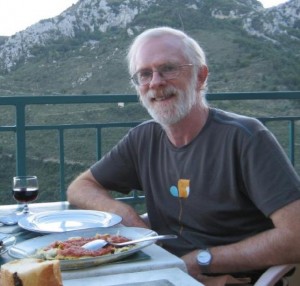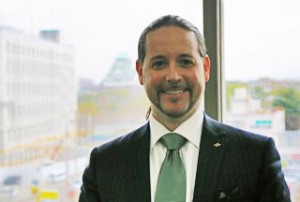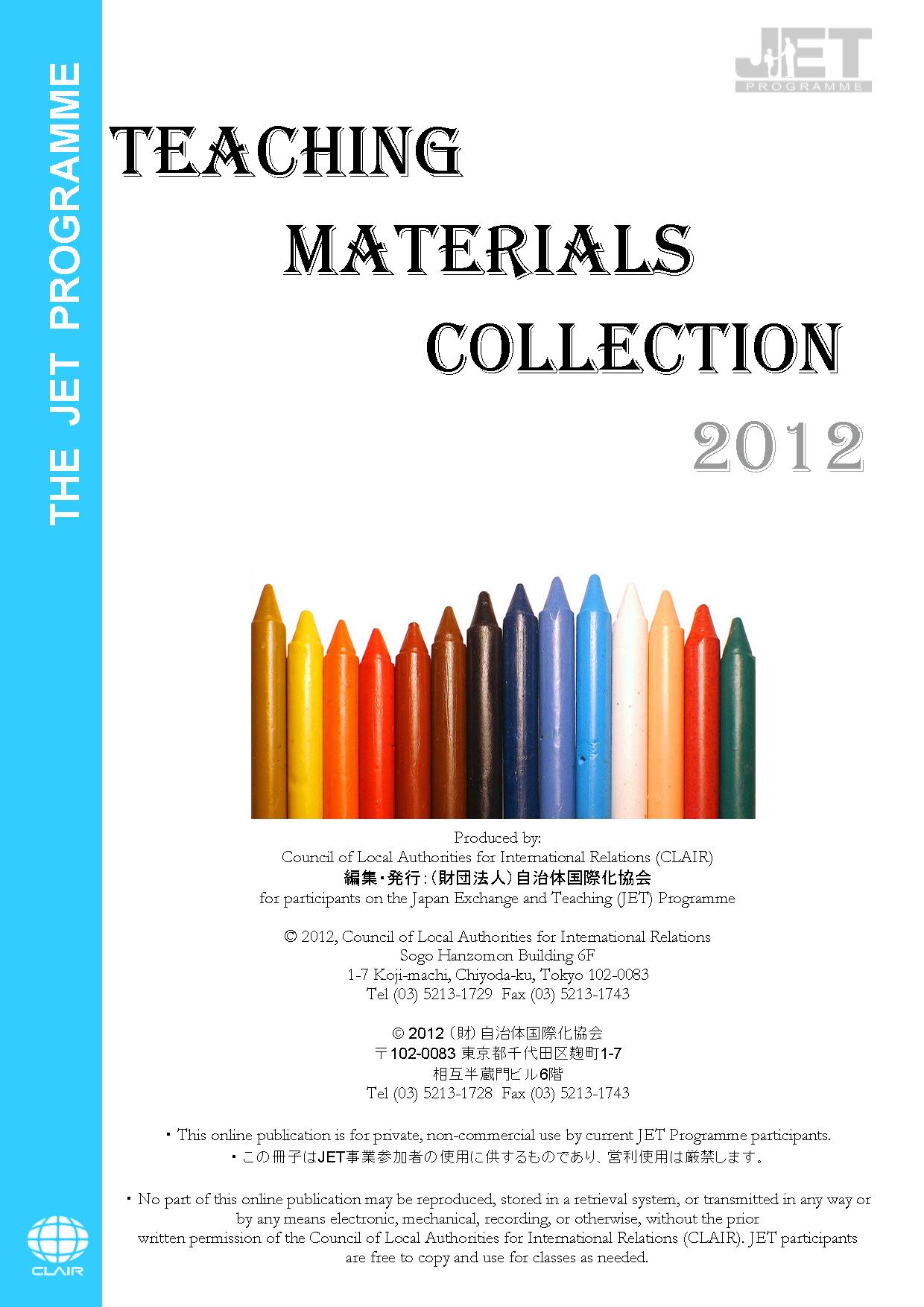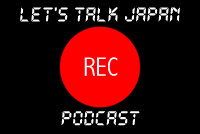Krewe of Japan Podcast S02E14-15 – Mastering Japanese Pitch-Accent ft. Dogen (Parts 1 & 2)
Posted by: Doug Tassin (Fukushima-Ken ALT, 2007-2010 & Krewe of Japan Podcast Co-Host)

Last week on the Krewe of Japan Podcast…
The whole Krewe sits down with famous comedian and Youtuber (and former JET Program participant in Oita Prefecture), Dogen! In Part 1, Dogen shares his background including how he became interested in Japan and its culture, his background in martial arts tricking, early attempts at learning Japanese, his path to writing comedy in Japanese, and so much more.
This week…
Nigel, Jenn, & Doug conclude their awesome discussion with comedian and Youtuber, Dogen! In Part 2, the Krewe joins Dogen as they embark on a deep dive into learning Japanese. This discussion takes them to many places from discovering the meaning of pitch accent and how to study effectively, to setting appropriate goals and hilarious language learning stories. This is an episode you don’t want to miss!
The Krewe of Japan Podcast is a weekly episodic podcast sponsored by the Japan Society of New Orleans. Check them out every Friday afternoon around noon CST on Apple, Google, Spotify, Amazon, and Stitcher. Want to share your experiences with the Krewe? Or perhaps you have ideas for episodes, feedback, comments, or questions? Let the Krewe know by e-mail at kreweofjapanpodcast@gmail.com or on social media (Twitter: @kreweofjapan, Instagram: @kreweofjapanpodcast, Facebook: Krewe of Japan Podcast Page, & the Krewe of Japan Youtube Channel). Until next time, enjoy!
Law & Language Podcast: Interview with JET alum Scott Alprin,
Episode 8 of the USLawEssentials Law & Language Podcast an interview with Scott Alprin (Aichi-ken, Kariya-shi, 1992-95) of Alprin Law Office, P.C. Scott is trademark and intellectual property attorney who speaks Japanese and works with many international clients. He discusses his career path and shares insights on law and practicing as an IP attorney.
JET alum Steven Horowitz (Aichi-ken, Kariya-shi, 1992-94), in collaboration with Daniel Edelson of USLawEssentials.com, recently launched “USLawEssentials: Law & Language,” a legal English podcast intended for foreign lawyers, law students, and LLM students as well as other non-native English speakers who want an enjoyable way to improve their legal English. The podcast episodes cover a variety of topics including legal news events and discussions of recent cases as well as interviews with multilingual lawyers. The discussions use accessible language with helpful explanations along the way.
JET alum launches legal English podcast

JET alum Steven Horowitz (Aichi-ken, Kariya-shi, 1992-94), in collaboration with Daniel Edelson of USLawEssentials.com, has launched a new legal English podcast titled “USLawEssentials: Law & Language.”
The podcast is intended for foreign lawyers, law students, and LLM students as well as other non-native English speakers who want an enjoyable way to improve their legal English. The podcast episodes cover a variety of topics including legal news events and discussions of recent cases as well as interviews with multilingual lawyers. The discussions use accessible language with helpful explanations along the way.
Notably, the first two multilingual lawyers interviewed are both JET alumni! Brian Hersey (Fukuoka-ken, 1994-96) and Brenda McKinney (Hyogo-ken, 2006-09)
Horowitz, the founder of JETwit.com, is a Professor of Legal English and the Director of Online Legal English Programs at Georgetown Law School. He previously served as Director of Legal English Programs at St. John’s Law School.
Edelson is an Adjunct Professor of Law at St. John’s Law School and a practicing attorney in addition to founding USLawEssentials.com. He has previously taught English in Japan and has taught legal English in Korea.
Horowitz and Edelson encourage readers to share the podcast with students and others they know who are seeking to improve their legal English or simply their English in connection with sophisticated topics.
Krewe of Japan Podcast E10 – Japanese Fluency Through Immersion ft. MattVsJapan
Posted by: Doug Tassin (Fukushima-Ken ALT, 2007-2010 & Krewe of Japan Podcast Co-Host)

This week on the Krewe of Japan Podcast…
The whole krewe is on hand for a special Japanese language study episode! Nigel, Maddy, Jennifer & Doug are all in on a discussion on Japanese language study, goal-setting and fluency. They are joined by MattVsJapan, a popular language study YouTuber who developed his own language learning methodology called Refold. Together, Matt and the Krewe discuss the concept of “fluency”, experiences in language learning, and overcoming obstacles that can typically impede progress.
The Krewe of Japan Podcast is a weekly episodic podcast sponsored by the Japan Society of New Orleans. Check them out every Friday afternoon around noon CST on Apple, Google, Spotify, Amazon, and Stitcher. Want to share your experiences with the Krewe? Or perhaps you have ideas for episodes, feedback, comments, or questions? Let the Krewe know by e-mail at kreweofjapanpodcast@gmail.com or on social media (Twitter: @kreweofjapan, Instagram: @kreweofjapanpodcast, & the Krewe of Japan Youtube Channel). Until next time, enjoy!
JQ Magazine: Book Review — ‘Speak and Read Japanese’

“Speak and Read Japanese won’t be mistaken for the most thorough guide for learning the language. But it is a nice reminder that injecting humor into language learning can go a long way.” (Stone Bridge Press)
By Rashaad Jorden (Yamagata–ken, 2008-10) for JQ magazine. A former head of the JETAA Philadelphia Sub–Chapter, Rashaad is a graduate of Leeds Beckett University with a master’s degree in responsible tourism management. For more on his life abroad and enthusiasm for taiko drumming, visit his blog at www.gettingpounded.wordpress.com.
Your JET experience (hopefully) included a lot of Japanese study. Whether you remember what learned is another story. But it might have helped to concoct some humorous words and phrases to help you best retain the new vocabulary.
Enter the world of mnemonics, courtesy of author Larry Herzberg. The longtime professor has created a language guide titled Speak and Read Japanese: Fun Mnemonic Devices for Remembering Japanese Words and Their Meanings.
You might be wondering, just what are mnemonics? They’re tools language learners might find indispensable in preventing the meanings of new words from escaping their minds. Early in Speak and Read Japanese, Herzberg mentions that such memory hooks have served as the best method of learning new vocabulary in foreign languages for him, for if he could tie the sound of words he was trying to learn to a word in English, he was more likely to retain the new vocabulary.
So is Herzberg’s work a productive tool for language learners? Well, much of the book is an English-Japanese dictionary featuring the translation of many common words and better yet (for hardcore Japanese learners), detailed breakdowns of each word’s kanji as well as literal translations for some terms. You might not have known that hikouki (airplane) is literally translated as “flying-going machine” and shinshitsu (bedroom) means “sleeping room.” And those wanting to improve writing kanji will be pleased to discover a chart of radicals toward the end of the book.
Japan Times: Osaka Embraces English Reformation
Former AJET Chair Matthew Cook (Osaka-fu, 2007-12) has been heavily involved in this cutting edge effort to improve Osaka’s English education system and is quoted in the article.
Osaka embraces English Reformation
BY TERU CLAVEL
While Osaka Mayor Toru Hashimoto’s controversial political antics have increasingly drawn criticism, little attention has been paid to how his leadership has prompted the most progressive reforms of English-language education in the nation. Hashimoto, who served as Osaka’s governor from 2008-11, made possible the appointment of fellow Waseda Law School graduate Toru Nakahara as superintendent of the Osaka Prefectural Board of Education, charging him with the task of empowering students to compete on a global stage.
Only in Osaka will students in the public school system have the opportunity to start preparing for the TOEFL iBT — an internationally recognized English-language proficiency exam for non-native speakers administered over the Internet that tests reading, writing, speaking and listening skills for entrance to English-speaking university overseas — in grade one of primary school.
With the urging of Mayor Hashimoto, Nakahara — who also graduated from the University of Michigan Law School and was a practicing attorney at a California firm for 10 years — left the private sector and took a substantial pay cut to become the principal of Izumi High School in Osaka in 2010. In 2013, Nakahara became Japan’s youngest-ever superintendent at age 42, overseeing 1,600-plus schools, and he formed what is known as the English Reformation Project Team.
Nakahara’s accomplishments in the United States and at Izumi High School have led him to be recognized as an education innovator.
“One thing I noticed when I was in Ann Arbor (Michigan) Read More
JQ Magazine: JQ&A with Jim Breen of Monash University on WWWJDIC

“I just spent several weeks in Finland and Sweden, where the level of English speaking is extremely good. No JET Programmes there. You can’t even argue that they are related languages—Finnish is just as foreign as Japanese, and probably has fewer gairaigo (borrowed words). How do they do it? By teaching it properly in the first place, with trained and qualified teachers.” (Courtesy of Jim Breen)
By Tim Martin (Fukui-ken, 2006-08) for JQ magazine. Tim is a neuroscience researcher and swing dancer based in New York City. He runs a blog called The Floating Lantern, where he writes about humanism and other things that matter. Lately he is trying to learn more about effective altruism and the science of applied rationality.
Jim Breen is the man behind a resource that probably every English speaker trying to learn Japanese has used: the massive WWWJDIC online dictionary. In the 1980s, Breen developed an interest in Japanese that led to him programming a Japanese dictionary for DOS as a hobby. While a professor of digital and data communications at Monash University in Melbourne, Australia, Breen continued working on the dictionary, until eventually it bloomed into an interface that connects and cross-references hundreds of thousands of entries for words, names, and kanji.
Now a recognized authority on lexicography and the Japanese language, Breen continues to work on his “hobby,” and is pursuing a Ph.D. in computational linguistics. In this exclusive interview, JQ spoke with Breen to find out how it all began, his thoughts on language teaching and the JET Programme, and how he thinks technology will affect our experiences with foreign language in the future.
How did you develop your interest in, as you say on your website, “things Japanese”? Is there a specific part of Japanese culture or media that got you hooked?
I guess my interest in Japan over other foreign countries began around 1977 when my eldest daughter, then six years old, began to study the violin using the Suzuki Method. My wife, a musician and music teacher, had heard about the Suzuki Method from a lecture and demonstration, had been extremely impressed, and had expressed an interest in our children studying in the method. From that point on Suzuki began to play an increasingly bigger part of our lives as our second and third children began to study within that method. Also, my wife began to explore teaching in the Suzuki Flute Method.
None of this interest was particularly focussed on Japan itself. In 1980, I took most of the year off work to complete my MBA (I was a budding junior executive in Telecom Australia in those days). A fellow student in our classes had studied Japanese, and impressed me by translating some of the titles of pieces in the Suzuki books. Also among the visiting lecturers was a former trade commissioner in Japan, who spoke eloquently about the importance of Japan and the need for people trained in Japanese. I recall going home that night and saying to my wife: “I think I’d like to study Japanese eventually.” She didn’t think much of the idea, and I concentrated on other things like finishing my MBA and completing a music performance diploma.
In mid-1981, my wife said one day that she thought she really should go to Japan to study teaching Suzuki flute with Toshio Takahashi at the Suzuki headquarters in Matsumoto, as there was no one in Australia teaching Suzuki flute. I liked the idea, and we agreed to go the following December and January, which is Australia’s summer period when schools are closed. Our kids, then aged ten, seven and three, could easily miss a couple of weeks school in December. I arranged two months’ Long Service Leave from Telecom (LSL is a employee right in Australia after you have worked more than 10 years with an employer), and after struggling for a short while with Teach Yourself Japanese (all Kunrei-shiki romaji), I also arranged to have weekly Japanese lessons with Brian Drover, who trained as a Japanese linguist in the Australian army during WWII.
So, in late November 1981, five Breens arrived at Narita, made our way into Tokyo, were popped on a Chuo-sen train to Matsumoto by people from the Suzuki organization, and later that day found ourselves being greeted by a welcoming party from the Nagano Girl Scouts(!). (My eldest daughter was a Brownie, so we had set the international tom-toms working.)
We spent two months in Matsumoto living in two tiny six-mat apartments rented to us by the mother of some local Girl Scouts. My wife had piano and flute pedagogy classes, my kids had lessons in violin and piano (the former with Shinichi Suzuki himself), and I did the housework, shopped, minded kids, tried to study Japanese, etc.
I guess I don’t have any particular parts of Japanese “culture” I concentrate on—my tastes are rather catholic in this regard.

“I didn’t have any idea what I was getting into when I arrived as a JET, or if I would even be here longer than a couple of years. However, working for the future of these children, and trying to give them more opportunities in their future, has become my greatest personal accomplishment and given my life new meaning.” (Courtesy of Matthew Cook)
By Eden Law (Fukushima-ken, 2010-11) for JQ Magazine. Eden is a member of JETAA NSW, based in Sydney, Australia, which is part of the thriving JETAA Oceania community that covers Australia and New Zealand.
As a JET Programme success story, that of Matthew Cook (Osaka-fu, 2007-12)’s must surely rank as being one of the most extraordinary and inspiring. Hailing from Blacksburg, Virginia in the U.S., Matthew’s interest in Japanese martial arts led to his participation on JET. Beginning a five-year tenure as an in Osaka ALT, he also served as AJET national council chair, working with the Japanese government as well as JET alumni associations, international corporations, and news media about the value of the programme and internationalization. In 2012, after his JET tenure ended, he was hired by the Osaka Prefectural Board of Education as their Native English Teacher (NET) Program Coordinator, and in the following year, became a senior staff member appointed to the revolutionary English Education Reform Project—and as far as anyone knows, a first for a foreign-born, former JET to be appointed to a senior government role in education.
Now almost a year after his historic appointment, Matthew generously took some time out of his packed schedule to talk with JQ about his role, and most interestingly of all, provide some frank opinions about the JET Programme and the state and future of English education in Japan.
First of all, let me just say, congratulations on your achievement. In a nutshell, how did you go from being an ALT to a senior staff position at the Osaka Prefectural Board of Education? Is that something you could have imagined doing when you first arrived as a JET in 2007?
Thank you very much. It’s been a whirlwind, these past few years, and the congratulations are appreciated. However, we believe the real work is just beginning now.
During my time as a JET, I had the unique opportunity to develop my own curriculum and methodology, teaching junior high and elementary school students. I taught phonics part of a methodology, with the goal of extensive reading. I also had the honor being the AJET national council chair my final year on JET. That experience opened a lot of doors, allowing me to meet some influential people that I may not have been able to meet otherwise.
One of those people was Toru Nakahara, who was named the superintendent of the Osaka Prefectural Board of Education on April 1 of last year. He holds the strong belief that English education has been a failure in Japan, and wants to reform the system altogether. He was one of the first people to take my opinions and experiences seriously, and believed that I could use them to play a key role in the reformation of English education in Osaka. Because of that, I got the chance to interview for a position on his special “English Reform Project Team,” fondly referred to as the “Seven Samurai.”
It’s something I never would have dreamed of in 2007. In fact, I didn’t have any idea what I was getting into when I arrived as a JET, or if I would even be here longer than a couple of years. However, working for the future of these children, and trying to give them more opportunities in their future, has become my greatest personal accomplishment and given my life new meaning.
“Seven Samurai” is a wonderfully evocative name. Who are the other members on the English Reform Project Team?
I was hired from outside the board of education along with Kiyoshi Takeda, who was a high school English teacher in Shiga prefecture. He took a couple years off, and a few years ago he graduated from Harvard with a master’s in educational leadership.
Colleagues who already worked for the board education were teamed with us, because they should have a good understanding of the internal processes of the board of education. Two members from the high school division, two members from the prefectural education center, and one member from the elementary and junior high school division.
I know it’s early days yet, but what kind of impact does the appointment of a non-Japanese (and a former JET!) to a government position have on English education and the perception of JETs in particular?
That’s a tough question for me to answer. It’s a huge leap forward, and very encouraging from my viewpoint. I hope that it opens the door for other government entities in Japan to see what’s possible and search out capable employees with broader experience and different perspectives to add to their workplace. If there’s anything that I’ve learned, it’s that diversity should be celebrated and encouraged.
Let’s Talk Japan Podcast, Episode 19 – Japanese Translation & Interpretation
Let’s Talk Japan is a monthly, interview format podcast covering a wide range of Japan-related topics. Host Nick Harling (Mie-ken, 2001-03) lived in Japan from 2001 until 2005, including two great years as a JET Program participant in Mie-Ken. He practices law in Washington, D.C., and lives with his wife who patiently listens to him talk about Japan . . . a lot.
In this episode, Nick speaks with Stacy Smith about the joys and challenges of working as a professional Japanese translator and interpreter. Stacy worked as a Coordinator of International Relations (CIR) for the Japan Exchange Teaching (JET) Program in Kumamoto prefecture before eventually returning to the United States and turning her love of Japanese into a career. When not on the road with work, Stacy lives in New York City.
Together they discuss how Stacy became interested in the Japanese language; how she went about deciding to become a professional translator & interpreter; the impact of technology; and tips for improving your own Japanese study habits
To learn more about Stacy, check out her website as well as her blog posts for JETwit. Also, here’s a great article about Japanese translation and interpretation.
If you have not already done so, be sure to “Like” the podcast on Facebook, and follow the podcast on Twitter @letstalkjapan. Additionally, please consider leaving a positive rating and/or review in iTunes.
Let’s Talk Japan, Episode 17 – Temple University Japan
Let’s Talk Japan is a monthly, interview format podcast covering a wide range of Japan-related topics. Host Nick Harling (Mie-ken, 2001-03) lived in Japan from 2001 until 2005, including two great years as a JET Program participant in Mie-Ken. He practices law in Washington, D.C., and lives with his wife who patiently listens to him talk about Japan . . . a lot.
In this episode, Nick speaks with Bruce Stronach, the dean of Temple University Japan, the oldest and largest foreign university in Japan. Together they discuss the unique undergraduate and graduate opportunities available at Temple’s Tokyo campus as well as recent trends and the future of higher education in Japan.
Nick
If you have not already done so, be sure to “Like” the podcast on Facebook, and follow the podcast on Twitter @letstalkjapan. Additionally, please consider leaving a positive rating and/or review in iTunes.
【RocketNews24】Ninja life skills: 7 tips to make learning Japanese that little bit easier
Posted by Michelle Lynn Dinh (Shimane-ken, Chibu-mura, 2010–13), editor and writer for RocketNews24. The following article was written by Philip Kendall (Fukushima-ken, Shirakawa-shi, 2006–11), senior editor and writer for RocketNews24, a Japan-based site dedicated to bringing fun and quirky news from Asia to English speaking audiences.
Despite its apparent difficulty, Japanese is fast becoming one of the world’s most desirable languages to learn, with more and more Westerners studying it every day. Eventually, though, we all hit a wall with our studies and feel like we’re not making any progress. The books you threw yourself into with such enthusiasm start to become a chore to open, the army of kanji characters you have yet to study stare back at you with mocking disdain, and despite all the hours you put in you still can’t quite keep up with that anime you were determined to watch without subtitles. It happens to the best of us, but there are ways to break out of this rut, not to mention rekindle that love for studying Japanese, or any other language for that matter.
So today we’d like to bring you our short list of tips and tricks for boosting your Japanese language ability and make studying less of a chore. The following is a combination of both tips and experiences of foreigners who have achieved varying degrees of fluency in the language and our combined knowledge. It’s by no means the final word in language study, but give some of these a try and we’re sure you’ll be surprised at how quickly your Japanese proficiency improves.
Nihongo Master: The Fun Way To Learn Japanese Online
Posted by Ashley Thompson (Shizuoka-ken, 2008-10), Community Manager for Nihongo Master and editor of Surviving in Japan.
Japanese is one of the hardest languages to learn. I’ve heard this numerous times.
People say it’s because you have to learn thousands of kanji in addition to hiragana and katakana.
As a visual learner, I’ve found the opposite to be true. Kanji makes sense to me. But what I’ve struggled with while learning Japanese, and believe many language learners experience, is maintaining the motivation to study.
This is why I was excited when asked to work with Nihongo Master, an online Japanese learning site with a fun, easy-to-use platform. The site takes an entirely different approach from all the tools I’ve tried, using social interaction and gamification methods to help learners stay motivated. As JETs we tried to make English classes enjoyable for our students, so why not have fun learning Japanese?
I’ve tried and used numerous language learning tools over the years–a few worked well and a lot of others didn’t. I bought study books and didn’t finish them. I found that I enjoyed practicing Japanese through online, computer or phone apps, but then lost focus within a few weeks. Few of them offered any sort of reward system or a way to stay motivated to continue.
Nihongo Master, on the other hand, provides incentive to learn, and keep learning, by unlocking achievements and earning points as you read lessons, complete tasks and do spaced-repetition vocabulary drills. The community groups and weekly community chat offer a chance to practice Japanese and ask questions. Or if you’re up for some friendly competition, you can build a team and compete against other teams as you learn.
This community aspect is something many of us studying on our own might find helpful, especially as it doesn’t require being at a specific location (other than your computer, of course). And the platform helps those of us who thrive off a little friendly competition. I wish that I had something like this years ago–a positive external motivator that makes the lessons less about endless textbook reading and more about learning for the fun of it.
Remembering that summer before I went to Japan on JET, I also think Nihongo Master would be useful for new JETs trying to cram as much Japanese into their brain as they can before they arrive. The lessons start out at the absolute beginner level and are engaging and easy to follow, helping beginners master hiragana and katakana. If you’re farther along you can skip ahead to later lessons. The hiragana, katakana and vocabulary in the lessons also include audio recordings by a native speaker for pronunciation practice, with a recorder to practice matching your pronunciation.
Another big plus is that Nihongo Master doesn’t use romaji in the lessons, so beginners become familiar with the Japanese writing systems right away.
The free Japanese-English dictionary comes in handy too, with definitions and sample sentences for over 150,000 words and 13,000 Kanji.
The introductory lessons are also free, and after that a premium subscription lets you access all lessons, make study lists, build custom vocabulary drill lists, and download kanji writing practice sheets for US$12 a month.
I’m excited about this platform and think its unique approach to language learning will fill in a large gap, particularly for those, like me, who need some external motivation and fun, especially if you’re new to Japanese.
Visit Nihongo Master to learn more and try it out for yourself. We would love to hear your thoughts!
Posted by Celine Castex (Chiba-ken, 2006-11), currently programme coordinator at CLAIR Tokyo.
CLAIR is currently in the process of revising and updating the Teaching Material Collection, a compilation of teaching resources from current and forme r JET participants. We are interested in collecting activity reports for our new section on Special Needs Schools from current and past JET participants. We are looking for original ideas for activities which you have used in your classes and which you feel could be effectively used in other JET participants’ classrooms for special needs students.
r JET participants. We are interested in collecting activity reports for our new section on Special Needs Schools from current and past JET participants. We are looking for original ideas for activities which you have used in your classes and which you feel could be effectively used in other JET participants’ classrooms for special needs students.
Please describe and outline your activity in accordance to the following format when filling out each section.
– Activity Title
– Submitted by: [Write your first and last name here.]
– Contracting Organisation: [Put the name of your current/past contracting organisation.]
– Target Group: [e.g. “ES 5th year,” “JHS,” etc.]
– Target Disability Group: [Visually impaired students, Hearing impaired students, Health impaired students]
– Difficulty Level: [Fundamentals: alphabet, colors, simple sentences, etc.; Basic Conversation: simple dialogue, direction giving, etc.; Conversational: attempting actual, guided conversation on a given topic; Other: to be precised, etc.]
– Activity Objective: [Write the goal of this activity. Example: “To practice asking and giving directions.”
– Procedure: [Explain the activity in clear and concise terms.]
– Materials and Preparation: [List the materials needed for the activity and how they are to be prepared and used.]
– Division of Roles for JET and JTE: [Write what the JET should be responsible for doing and what the JTE should be responsible for doing in terms of preparation and execution of the activity.]
– Suggestions and Advice: [Write any practical tips or advice you may have for making the activity run more smoothly and effectively. Also, if you have any troubleshooting advice, please write it here.] Read More
UK JET alum a finalist for Pearson National Teaching award
 Via the JETAA UK website:
Via the JETAA UK website:
An ex-JET, Crispin Chambers (Hyogo-ken, Awaji-shima), who now teaches Japanese at Tavistock College in Devon has won a teaching award for the South West of England. He is now a finalist for the Pearson National Teaching awards 2013. This is the first time a teacher of Japanese, and an ex-JET has been nominated, and JETAA would like to extend our warmest congratulations!!
Crispin was originally a JET on Awaji Island for 2 years and then became JET programme co-ordinator for a year at CLAIR in Tokyo. After returning to the UK, Crispin gained an MA in Japanese at Sheffield University followed by a PGCE at Nottingham University. He has been teaching Japanese and French at Tavistock since 1996, and has trained several other teachers of Japanese. His lessons are inspiring and fun, and were described by the Teaching Awards judges as “a joy to watch”. You can see his entry and leave him a message here:
You can learn more about Crispin’s fantastic Japanese lessons on a case study of the school written by the Japan Foundation in 2011. Click here orhere to read it.
There are currently two former Tavistock College students on the JET Programme in Saga and Sendai, so Crispin has gone on to inspire the next generation of JETs.
The Growth of MAT-TESOL and USC Rossier Online
If any JETs or JET alumni are thinking of doing a Masters in Teaching English to Speakers of Other Languages (TESOL), this is definitely worth a read. I also encourage any JETs interested in teaching to join the JETAA Educational Professionals LinkedIn group:
THE GROWTH OF MAT-TESOL
This blog post was originally published at USC Rossier Online and written by Dr. Rob Filback and Dr. Christian Chun. Dr. Filback is Associate Professor of Clinical Education and Co-Chair of the Global Executive Doctor of Education program. He serves as a coordinator for the MAT-TESOL. Dr. Chun is Assistant Professor of Clinical Education for the MAT-TESOL program.
Origins of the MAT TESOL
Our MAT-TESOL degree that launched in 2010 is the product of a multi-year, collaborative redesign process. The MAT-TESOL program (Teaching English to Speakers of Other Languages) boasts a rich heritage at USC and has featured prominent scholars over the decades such as David Eskey, Fraida Dubin, and Stephen Krashen. In 2008 we decided to build on this foundation by redesigning the TESOL program in order to create a new, innovative and forward-looking degree that could better prepare graduates for the new challenges and new opportunities now facing English language teachers around the world.
We began by inviting an external review by a team of experts: Donna Brinton, Maureen Andrade and Lia Kamhi-Stein. Then, using this team’s recommendations, the faculty worked together to overhaul the USC TESOL program. The existing degrees were closed and one entirely new degree, the MAT-TESOL, was created. This included designing all new courses focused on current problems of practice , expanding the role of clinical field experiences, restructuring the capstone and practicum experiences to be more professionally relevant, and integrating technology including offering the degree online through 2SC.
About the Degree
The resulting MAT-TESOL degree directly addresses prevailing challenges being faced by TESOL educators in classrooms around the world. The new degree is also more dynamic and nimble, designed to give faculty the ability to make ongoing changes and to develop new units and modules as new needs are identified. The degree consists of four terms of coursework requiring approximately 14-15 months to complete. The online degree and the on-campus degree utilize the exact same curriculum, faculty, and requirements. The target audience for the MAT-TESOL includes current or prospective teachers who wish to enter or advance in the field of TESOL. Roughly a third of program participants are pre-service or novice teachers, while the remaining students have a range of teaching experiences that include teaching young learners or K12 students, university students, and or adults. About half of the students in the program are situated domestically in the U.S. and about half complete the degree while residing in another country. The majority of participants who complete the MAT-TESOL are U.S. citizens.
Growth of the Program
Since the launch in 2010, the number of enrolled graduate students has increased dramatically, from a 12-member on-campus cohort in the Fall 2010 to 39-member on-campus cohort for Fall 2012. The online cohort students have increased as well in the last two years, bringing the total number of both on-campus and online students in the Fall 2012 cohort group to 71 students! They have come from a variety of countries including Spain, Italy, Japan, South Korea, China, Saudi Arabia, and of course, the USA. In addition, the Trojan TESOL society has been reactivated with numerous students planning activities and events for the coming academic year. Several of our MAT-TESOL students have presented on their work at professional conferences including the regional TESOL conferences. Our graduates are currently teaching across the United States and abroad in a variety of educational settings.
To learn more about the MAT-TESOL program, request more information or check out the USC Rossier Online TESOL page!





